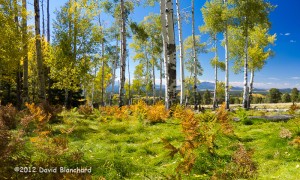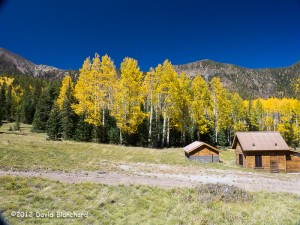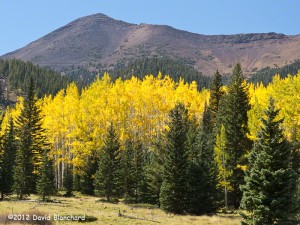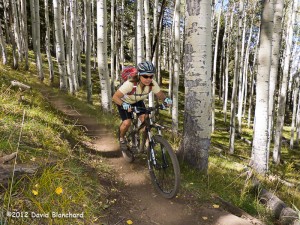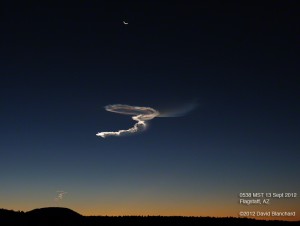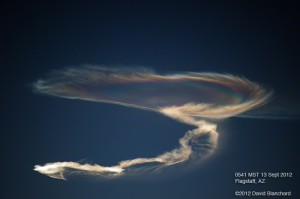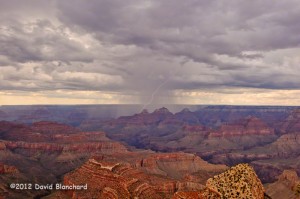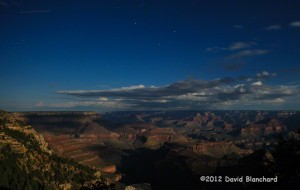A few days ago we decided to spend the day wandering around the East Pocket area. This location overlooks the Red Rocks-Secret Mountain Wilderness on one side and Oak Creek Canyon on the other. It is a relatively flat area surrounded by steep cliffs and deep canyons. Back in the fall of 2005 we explored this area for the first time and decided that we needed to return to see more. Well, it took a few years…
To get to this location you drive south on FR231 — also known as Woody Mtn Road. From the end of the pavement it is about 28 miles to the East Pocket. The dirt road is pretty good for the first half — and not too bad over the second half.
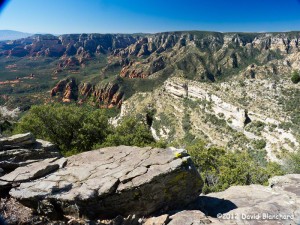
There are no trails on the East Pocket but there are old, abandoned forest roads that are disappearing into the forest. We set off towards the south to see if we could reach the southern point and then find a way across the canyons and climb back to the flats farther south. For an idea of what the terrain looks like, follow this link to Google Maps.
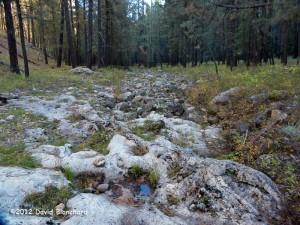

On the way home, we stopped at the bridge that crosses the extreme upper reaches of the West Fork of Oak Creek Canyon. At this point, there is no water and it consists of a rock strewn stream bed in a mountain forest of pine, spruce, and fir. There is a cautionary sign informing hikers of the difficult hiking to be found while heading downstream. We did this canyon from the upper end to the lower end about 10 years ago. It was a very challenging, but ultimately rewarding, 13-hour hike (and swim).

